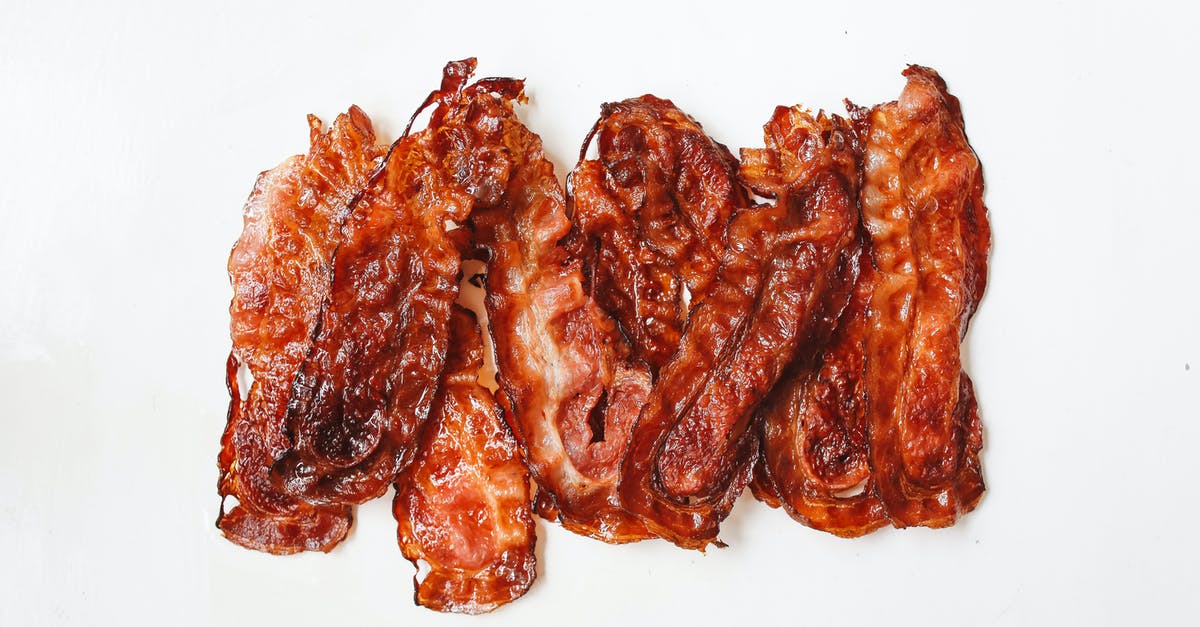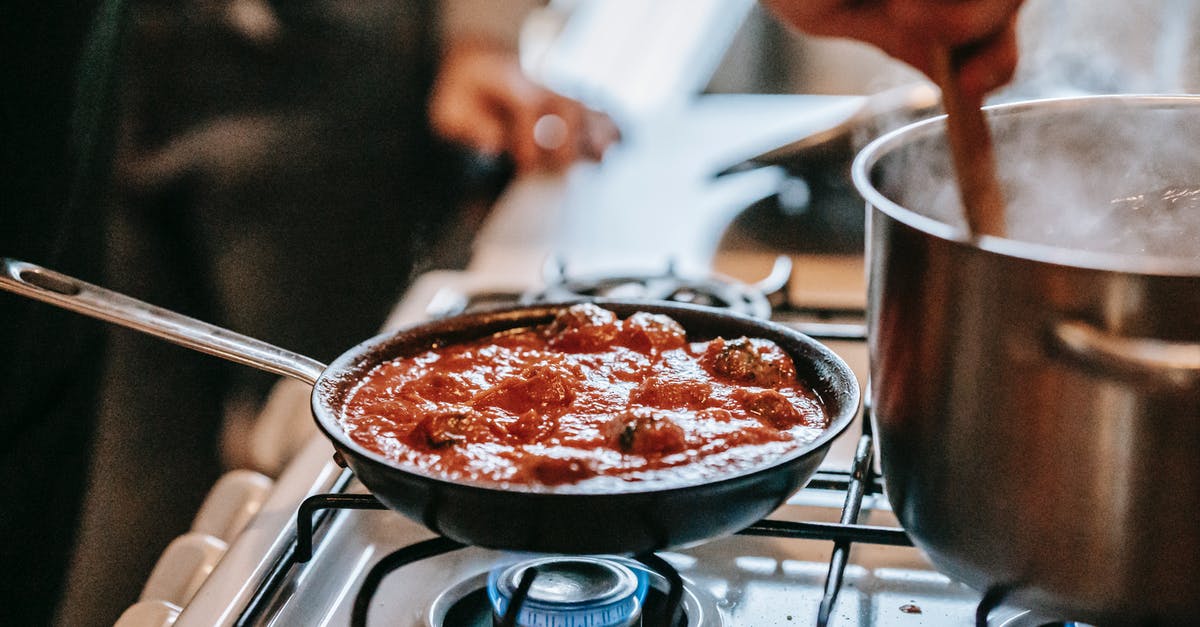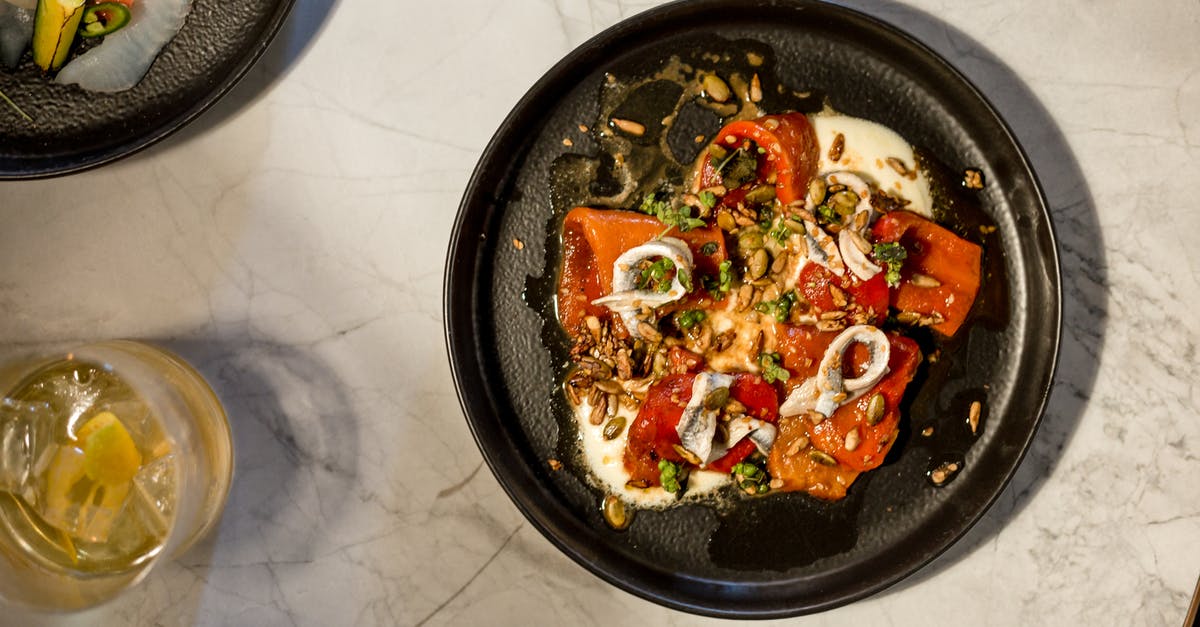Is my pan too hot for brown sauce / gravy?

I've tried to make the following sauce the last couple of days. The same pan is used for everything.
- Fry steak. Put steak on plate.
- Sauté onions.
- Melt butter and mix with flour.
- Add stock.
- Season.
- Let simmer for a couple of minutes
The taste and texture of the end result are fine. However, the high temperature of the pan (I like cancer with my meat) means that:
- The butter gets burnt. It's brown and half-molten long before I've time to add flour. Does this result in any undesired reactions?
- When the butter/flour mix is stable, the pan seems to be much hotter than 100 degrees. Adding the stock results in violent boiling. Could this damage my (teflon or cast iron) pan or affect the dish?
If the above poses problems, how should I solve them? (I imagine that) I like the taste imparted from the recently used pan.
Best Answer
You've got this all mixed up! Unless you're deglazing to do a pan sauce, the steak should be the LAST thing cooked. It's the centerpiece of the dish and the most expensive part, and shouldn't have a chance to get cold while you cook the other parts. Saving cleaning on a single saucepan is not worth eating cold steak.
You MUST use a stainless or cast-iron for this. As others touch on, teflon is not safe for searing, and fast temperature changes will wreck it.
Here's how to do things:
- Julienne onions to saute, prepare and measure stock, trim fat from steak, cut or butterfly it if needed (this is your mise en place).
- Start preheating saute pan for onions
- Start butter melting in saucepan for roux
- Prepare roux and saute onions at same time, then add stock to roux, whisk, and season
- Transfer onions to bowl, cover to keep hot, and start to preheat pan for searing steak
- Cook steak while finishing sauce as needed, then rest it appropriately
- Plate steak, garnish, sauce, and serve
Alternately, here's another approach:
- Mise en place (prep ingredients, optionally pre-measure them)
- Prepare sauce in advance, set aside or keep hot. Or, even do it the day before and reheat it. It's a roux-based sauce; it won't go bad in the fridge, and will reheat beautifully.
- Saute onions. Or, caramelize onions beforehand, and just reheat them briefly and add.
- Cook steak
- Plate, sauce, serve
And, finally the deglazed pan sauce way
- Mise en place
- Sautee onions. Set aside in bowl (or on a serving plate)
- Cook steak
- Throw heavy cream or red wine in to pan, and deglaze by scraping vigorously with a utensil and stirring as it boils vigorously
- Quickly season this, and throw in the onions, a few pinches of parsley, pepper, salt, garlic, and paprika, plus optionally thyme
- Congrats, you now have a pan sauce with onions to throw on your steak
In a professional kitchen, you'd have your onions pre-sauteed or sauteeing at the same time as the steak, and your sauce will be prepared in bulk, beforehand. You'd only have to cook the steak and briefly heat or season the other two parts.
Pictures about "Is my pan too hot for brown sauce / gravy?"



How to make GRAVY
More answers regarding is my pan too hot for brown sauce / gravy?
Answer 2
The solution is very simple.
- Fry steak
- Saute onions
- Remove from stove, wait a minute or two
- Melt butter, add flour
- Season with heat insensitive stuff (e.g. salt)
- Add stock
- Return to stove
- Let simmer for a couple of minutes
- Season with heat sensitive stuff (e.g. fresh tarragon)
Assuming that you are frying your steak below the carb charring temp of ~190°C, the minutes spent away from the heat and the heat spent to warm the butter and the flour will change the mixture's temperature to something much more maneageble, below the smoking point of butter (roughly 150°C). It will still stay above 100°C, but the steam building won't be too terrible. It is normal to prepare roux at above 100°C.
As for the damage, I don't think that we know it. I asked about it once, but no answer was complete enough to accept. See How does thermal shock affect pans made of different materials? for details. Still, I don't use coated pans (PTFE or this "diamond" stuff) for deglazing. The 400° proof ceramic coated ones could be safer, but I still find steel better for this application.
Answer 3
A hot pan will help you generate the fond while cooking your steak. The onions likely require something less that a scorching surface to grill. You might try letting your pan cool for even a minute before attempting your roux or possibly use a bit of olive oil ahead of the butter which will greatly reduce its propensity to burn. Even better use all olive oil for your roux and then add butter at the end to give your sauce some added flavor.
You are unlikely to damage your cast iron pan with the preceding. The biggest issue with a Teflon pan is that you will never generate that wonderful fond that adds to the flavor and high heat itself is not good for Teflon.
Answer 4
There is a similar (but not an "exact duplicate") question here: Is Teflon dangerous? that will shed some light on your question. I have learned (recently) that cooking with Teflon at "very high temperatures" is not a good idea (in fact if you read the "instructions" I hear that it tells you to not cook with teflon above medium... being "a man" I have never 'read the instructions') and have found good results from toning it down to "medium".
You might consider keeping the heat and changing the pan to cast iron. Here are some tips for accomplishing your goal with a different pan.
Sources: Stack Exchange - This article follows the attribution requirements of Stack Exchange and is licensed under CC BY-SA 3.0.
Images: Edward Eyer, Polina Tankilevitch, Gary Barnes, Sander Dalhuisen
